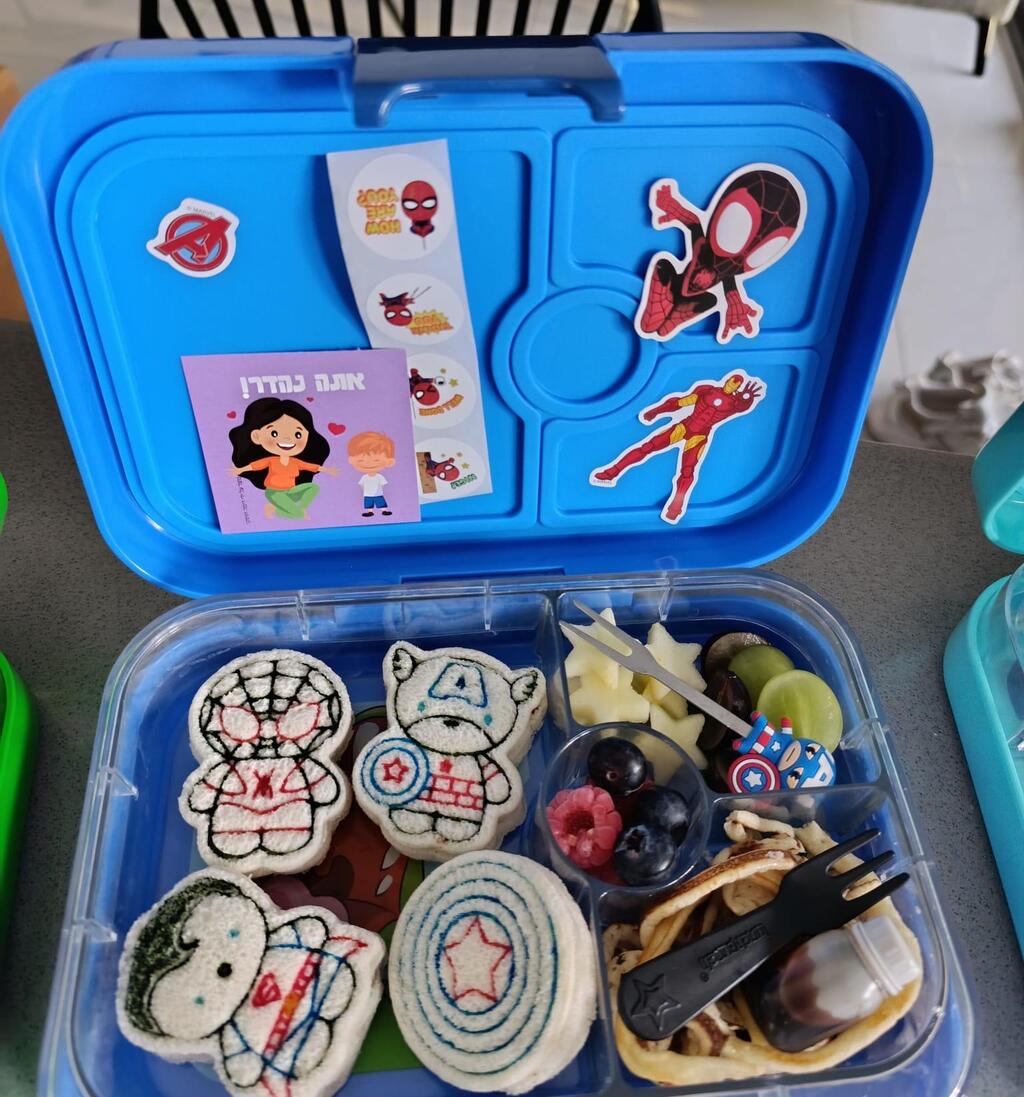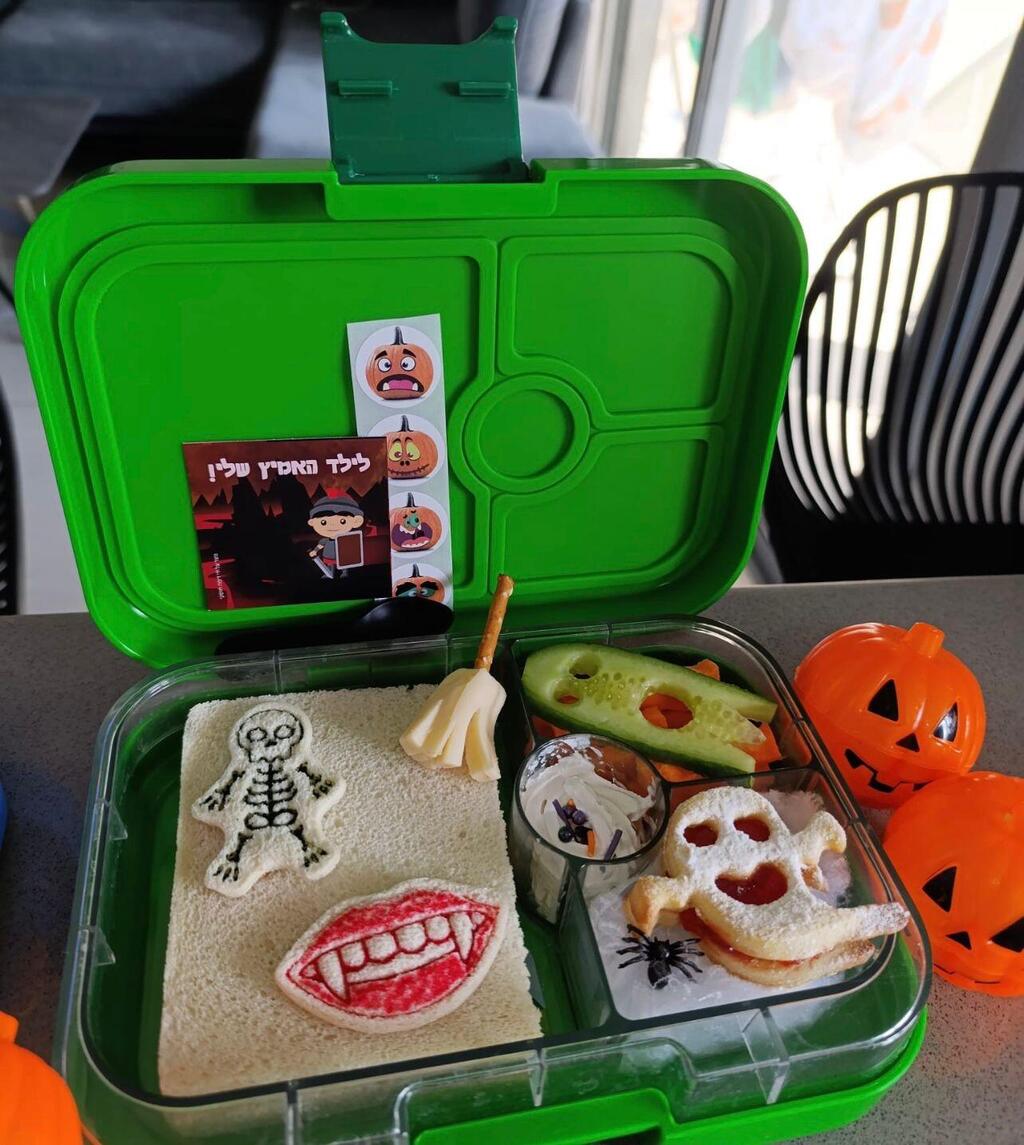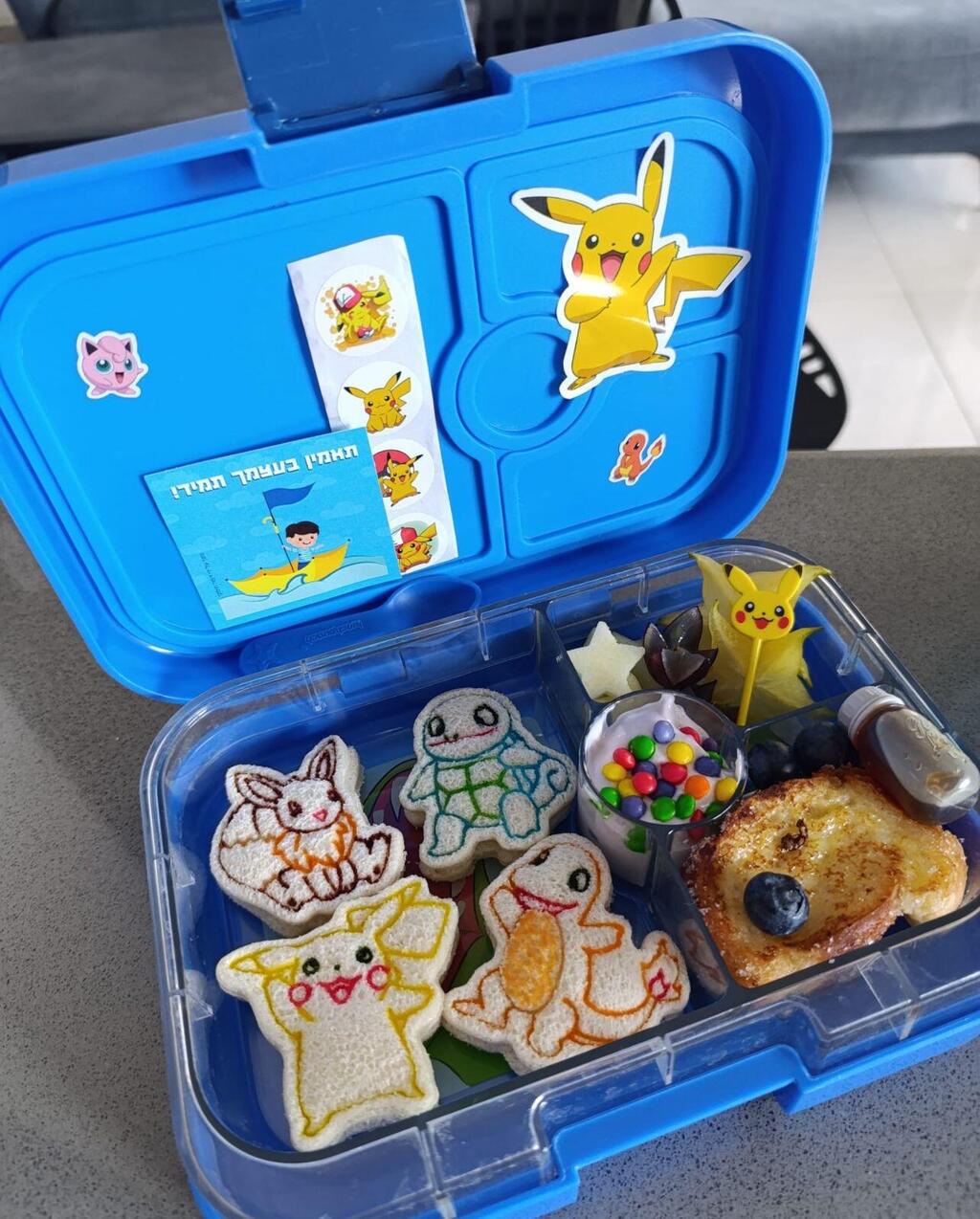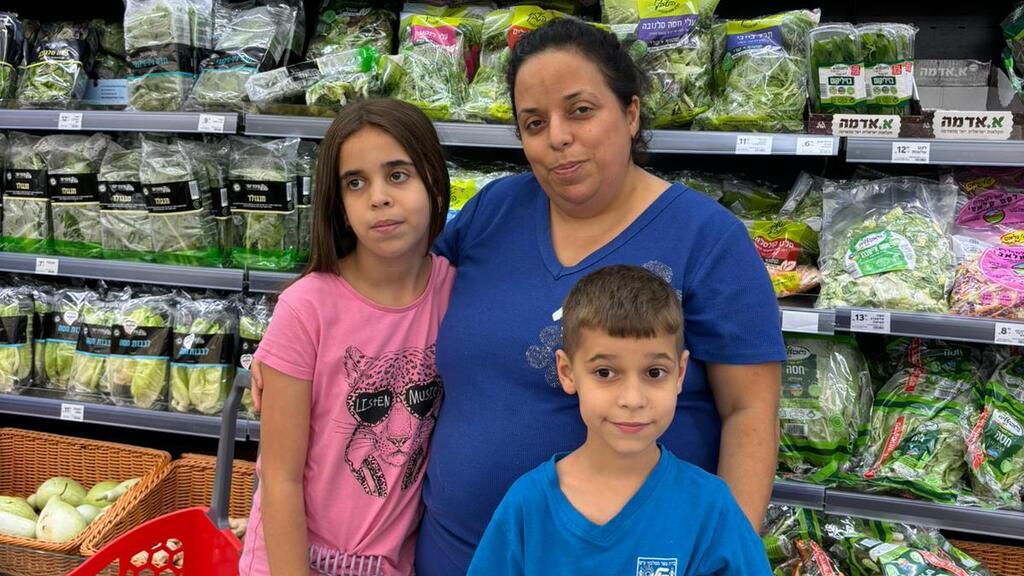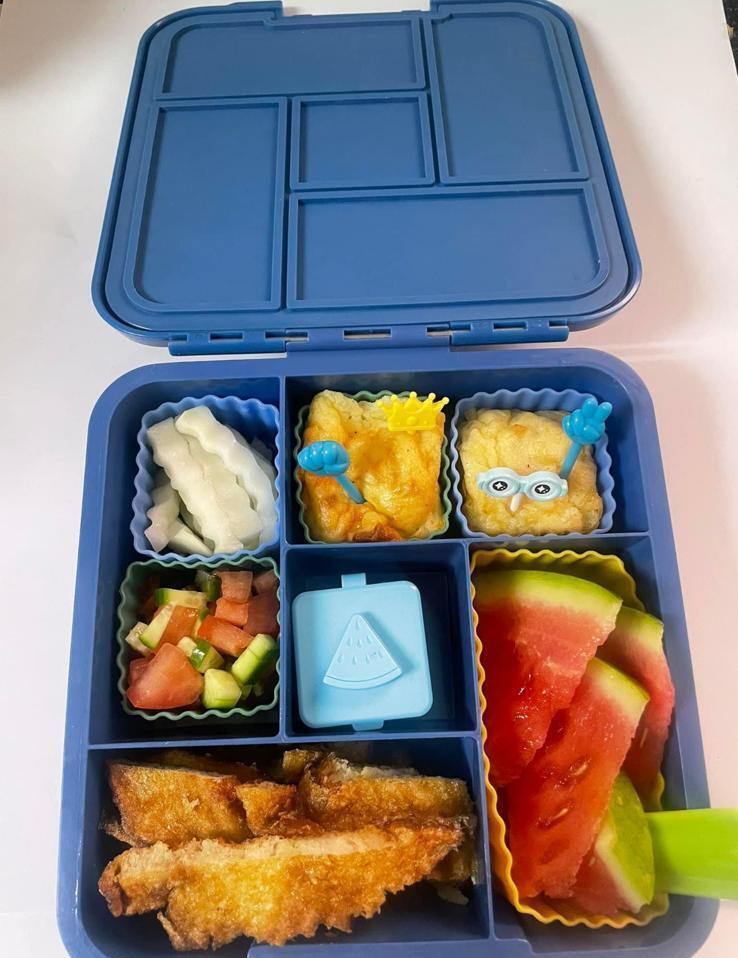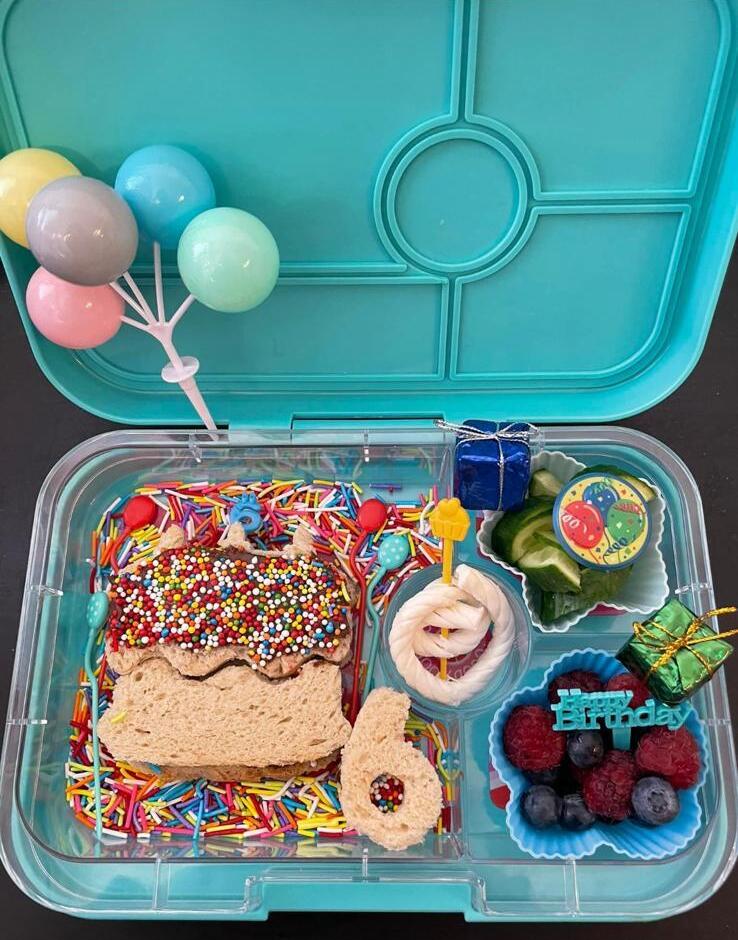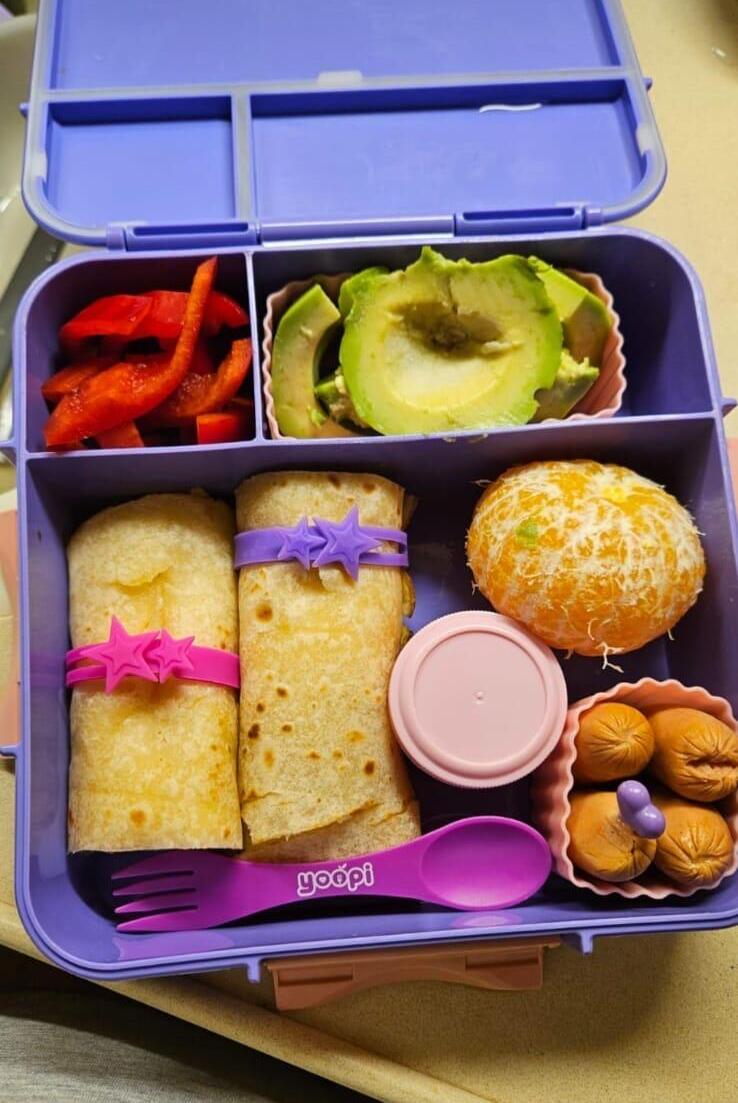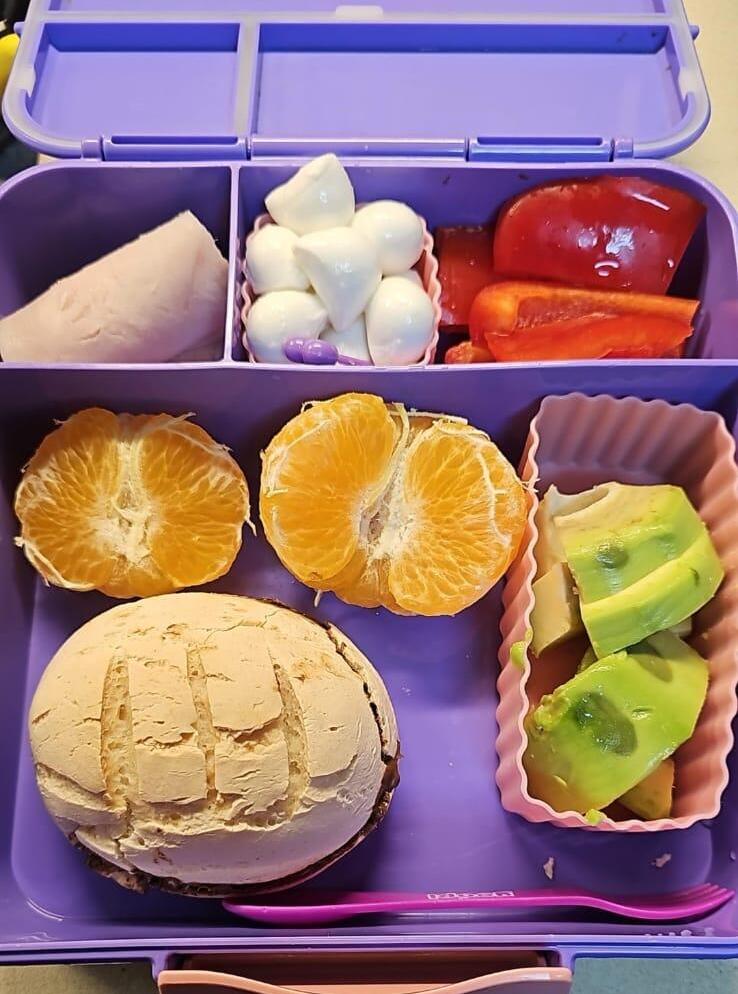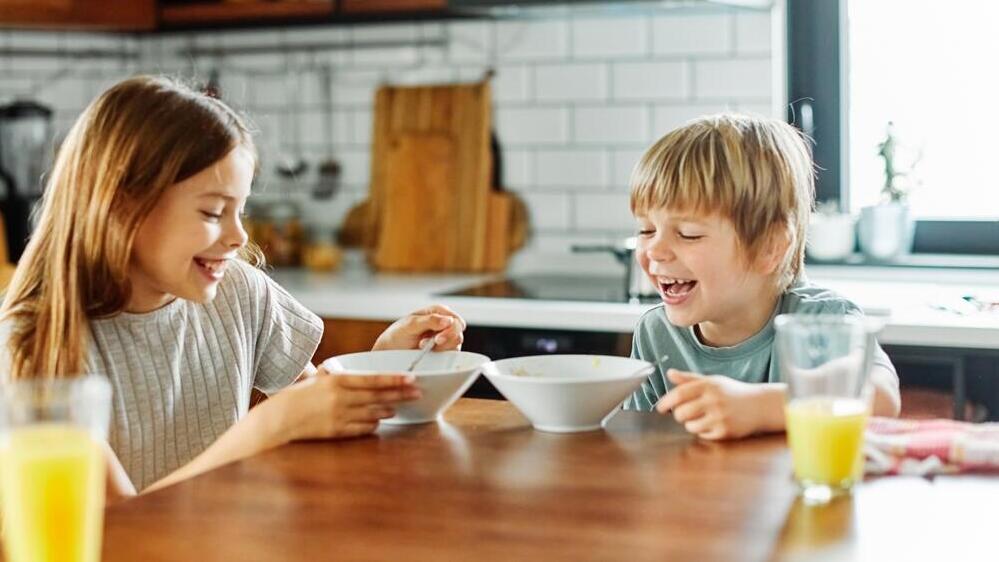Getting your Trinity Audio player ready...
When Maayan Hafuta from Nahariya goes to bed, she sets her alarm for 4:45 a.m. But it’s not for a long commute, an early workout or to watch the sunrise. Maayan has a passion for creating elaborate and beautifully designed lunchboxes for her three children – Noam, 9, Liam, 7, and Ilai, 5.
“I admit, I’m a little obsessed," Maayan says. "It takes me about two hours each morning, depending on how creative I decide to get. I don’t prepare anything the night before because I want it all to be fresh. I started when my eldest began preschool, and every year I get more into it. I spend hours on AliExpress looking for accessories to bring my ideas to life. I work in HR, mostly from home, but even when I used to commute, I still made the lunchboxes. If it means waking up 30 minutes earlier, I’ll do it.”
How early can you wake up?
“I know it sounds crazy, but when you love something, it’s not that hard. This time in the kitchen with the lunchboxes is my 'me time.' It's more than just food for the kids – it's how I express myself. Even recently, when our routine was disrupted because of the fighting in the north and the schools were closed, I still got up and made the boxes. The kids love it, and that makes it all worth it.”
Are they picky eaters? "They’re not too fussy, but I’m very particular about making sure they eat well. We eat with our eyes first – when food looks good, you want to eat it, even if you’re not very hungry. I get so excited when the boxes come back empty."
What do you put in the lunchboxes?
“I wouldn’t call them 'healthy,' but I try to keep a balance. I do sneak in some sweets. My kids aren’t big fans of fruits and veggies, but I always include them. No tomatoes, because I know they won’t touch them, but I’ll cut cucumbers or carrots into fun shapes. I also use an edible marker to draw on sandwiches, which might have cottage cheese, an omelet, cheese or sometimes chocolate spread.
"There are always a few options in the box. If I bake muffins or pancakes, I try to make them healthier with ingredients like soy milk and spelt flour – things they usually wouldn’t eat, but they don’t mind when it’s presented this way. I also make extra food so they can share with other kids. Of course, I follow all the allergy guidelines set by the school."
“I also include little notes with good morning wishes or riddles, and I stick on motivational stickers like ‘Mom loves you’ or ‘From the heart,’ just to add more meaning to the box and show them I’m thinking of them.”
Do you go all out for meals at home too?
“Actually, yes. I don’t cut food into shapes, but I’m still particular about presentation. If I’m making burgers, I’ll add a toothpick and wrap the fries in paper to make the meal feel special. The kids love it –they think they’re eating at a restaurant.”
What does your husband think?
(Laughs) "He thinks I’m certifiably crazy. Every night, I write out a menu for the next day and plan how I’ll arrange the lunchboxes. Sometimes he texts me things like, ‘I married a crazy lady – love you, go to bed!’ But in the end, he goes along with it. After all, I’m doing it for his kids, too."
How do others react?
"Some people ask if I don’t have anything better to do and suggest I sleep more, but those who know me understand. My sister says there’s no way she’d wake up that early to make lunchboxes. But I love it. When I started sharing my lunchboxes online, I got so much positive feedback and questions from people. Sure, there are always going to be those who think it’s a waste of time, but I hear less of that now.”
How much do you spend on this hobby?
"I’d rather not say – so my husband doesn’t find out!" (Laughs) “Of course, it adds up, but most of the items I buy aren’t disposable. I invest in good quality containers that last a long time, but yes, I’m always looking for new things, and that costs money.
"I make sure the lunchboxes are high-quality and completely sealed, so they last for years. I decorate them with stickers, but if the box is lower quality, it’s a nightmare to peel them off. At the beginning of each school year, I buy three high-quality lunchboxes, and each one costs around 170 shekels ($45). I know it sounds excessive, but normal people can use the same box for several years – I'm just a bit more obsessed!"
Belgian waffle-shaped casserole
For several years now, the lunchbox craze has been thriving in Israel, drawing inspiration from Japan’s bento culture. A bento is a takeout meal packed in a compact box, designed to maximize space and feature visually appealing, neatly arranged food.
In stores, you'll find dozens of accessories for decorating food, from cutters in various shapes to colorful skewers. On TikTok, there are thousands of videos teaching how to make a green apple look cool, Instagram is filled with perfectly styled lunchbox photos, and on Facebook, groups connect thousands of mothers who want to give their kids more than just a plain sandwich.
One such group, Kids' Lunchboxes, has 37,000 members, mostly mothers, who share their creations, gather inspiration, and swap recipes. The group’s administrator, Shirel Kaniznikov from Kiryat Malachi, is a mother of two – ages 12 and 7 – who enjoy special lunchboxes every morning.
“My daughter is a very picky eater,” Shirel shares. “When she was 3 and in preschool, she’d bring her lunchboxes back full. That’s how I discovered bento culture, but it didn’t help much – she still ate mostly cucumbers and cheese.
"When my son started kindergarten, I noticed he wasn’t eating what I packed either, even though he’s not picky. I realized he needed more stimulation, so I started using the accessories I’d bought for my daughter. One day, I cut his toast into a puzzle shape, another time I put the vegetables on a skewer. Suddenly, the boxes came back empty.”
So you started putting in more effort.
“My mom used to give my older sister 20 shekels and send us to the corner store for bread and cheese. My sister would say, ‘Let’s buy a chocolate bar and a bun – Mom won’t know,’ and that was my breakfast for years. I didn’t grow up with balanced meals and only learned to eat fruits and vegetables as an adult. My mom, bless her, didn’t put much effort into it.
"I’m not judging her, but even as a kid, I told myself I’d do things differently when I became a mom. Now, when my mom sees the lunchboxes I make, she asks, ‘Where do you get the energy? How do you have the patience?’ But honestly, when I see my kids eating and enjoying their food, I know I’ve done my part. Yesterday, I made a casserole in the shape of a Belgian waffle, and my son ate the whole thing.”
How long does it take?
"Since I don’t pack huge portions and I prepare some things ahead of time, it takes me about 20 minutes. Of course, if I’m making something special like a casserole, it might take an hour. But generally, the kids eat things that are pretty easy to prepare. How long does it take to cut two cucumbers? I love the kitchen – I’m quick."
What’s inside the lunchbox?
“At home, I’m a pretty laid-back mom, but when it comes to school, I want them to eat well. There’s always a protein like cheese, tuna or hummus, some bread, two kinds of veggies or a veggie and a fruit, and a little snack on the side. Today, for example, I added pretzels.”
What kind of accessories do you buy, and where from?
“Mostly from AliExpress – tiny forks, skewers, cutters, baking papers, stickers… it’s a whole world. It’s become a hobby for me. You’d be shocked if you saw my storage unit at home.”
How much do all these accessories cost?
"I’ve spent a lot, I’ll admit – I went a little overboard. But the kids give great feedback; they appreciate it. One time, I made my son a dinosaur-shaped casserole. He came home and told me excitedly how all the kids crowded around his table to see his lunchbox. I was on cloud nine. I love feeding people, and I love hearing compliments."
Andy Dorfman Graitzer, 42, from Kibbutz Geva near Afula, prepares a carefully crafted lunchbox every morning for her 8-year-old daughter, Alma. After Alma was diagnosed with celiac disease a few months before starting first grade, Andy wanted to make sure her daughter’s meals were enjoyable and safe.
“She didn’t always want to eat, and there wasn’t always food available for her. I wanted to give her something fun and tasty, so I started preparing a specially designed lunchbox every morning. It takes me about 20 minutes. Sometimes I use cutters to create fun shapes in the bread, or I make fruit skewers,” she explains.
“We work closely with a nutritionist, and I make sure that Alma’s lunch has a little of everything: hummus, omelets and cheese. Many parents in the celiac community struggle with preparing meals because gluten-free food, unfortunately, isn’t the same. For example, gluten-free bread hardens like a rock when it cools. In these groups, we help each other with new ideas for what to pack, and that helps me keep things varied.”
What should go into a child’s lunchbox?
Nutritionist Yael Yoslevitz from Maccabi Healthcare Services in northern Israel stresses the importance of a balanced breakfast or mid-morning meal. “Breakfast, or break-fast, is the meal that breaks the overnight fast. It’s essential for maintaining focus, balanced moods and optimal learning and functioning abilities. A lunchbox should include foods from all food groups.”
Recommendations for a balanced lunchbox:
Whole grains and complex carbohydrates: Carbs are a key source of energy. Choose complex carbohydrates, which help regulate blood sugar and provide lasting fullness. Look for breads that contain at least 50% whole grains.
Proteins from both animal and plant sources: Proteins are vital for building body tissues, like building blocks for growth. Sources include dairy, eggs, meats and legumes such as lentils, beans and chickpeas.
Fruits and vegetables: These are rich in fiber, vitamins and minerals, essential for overall health. Aim for at least five servings of colorful fruits and vegetables daily, with an emphasis on vegetables.
Healthy fats: Fats are necessary for absorbing vitamins, hormone production and storing energy. Include sources like olive oil, avocados, tahini and natural nut butters.
It's also crucial to pack the lunch in a way that maintains freshness and appeals visually to children. Andy highlights the importance of variety: “We wouldn’t want to eat the same thing every day, so why should kids? Let them choose from a range of options – like cold pasta with vegetables and tuna or last night’s casserole with cut-up veggies.”
Packaging also plays a significant role. Choose a lunchbox together with your child to make the experience more enjoyable. Additionally, always send your kid to school with a large water bottle, ensuring they stay hydrated throughout the day. Adding fresh or frozen fruit, mint or lemon can make water more appealing to kids.
Get the Ynetnews app on your smartphone:


